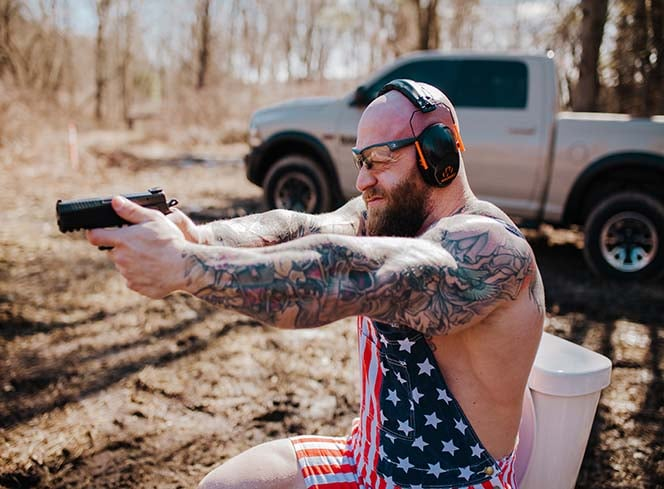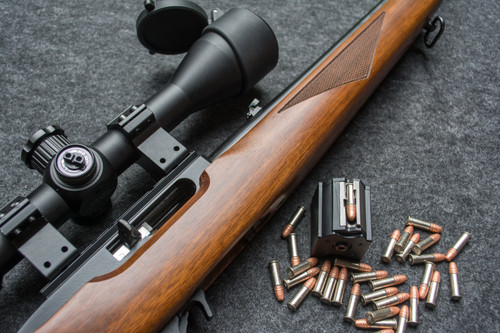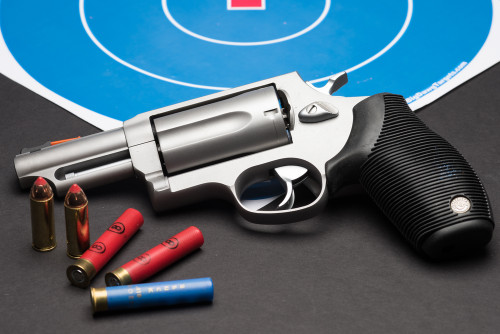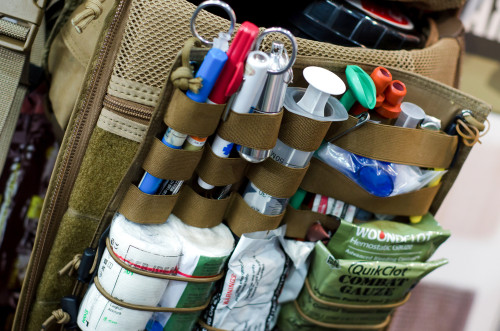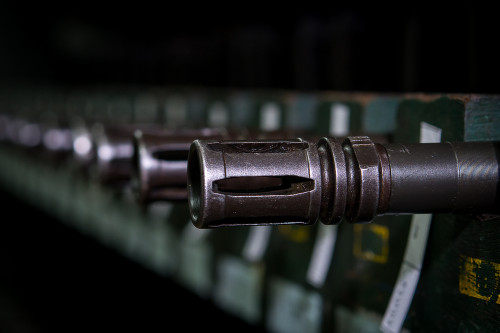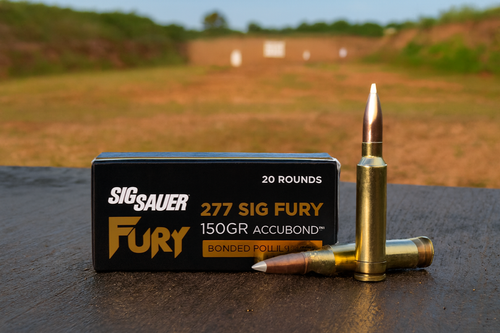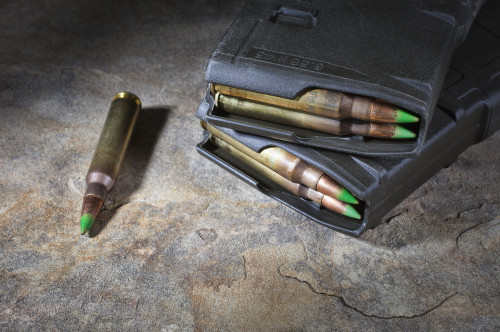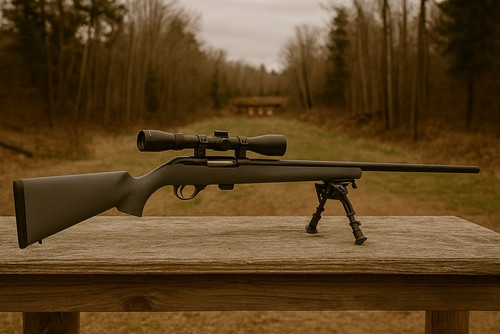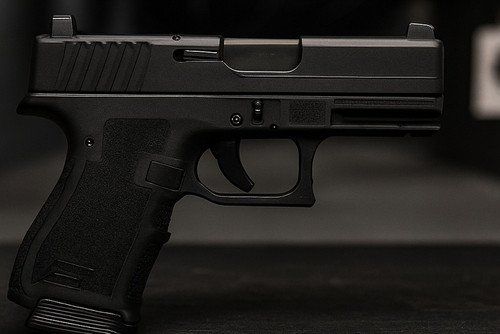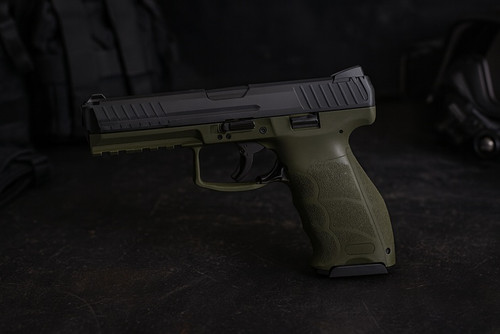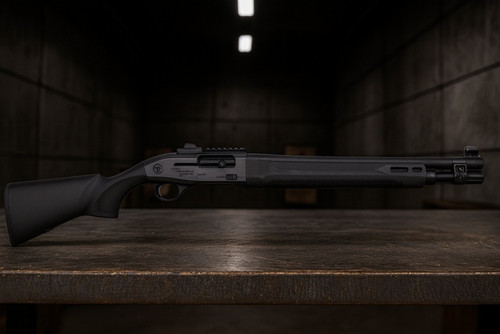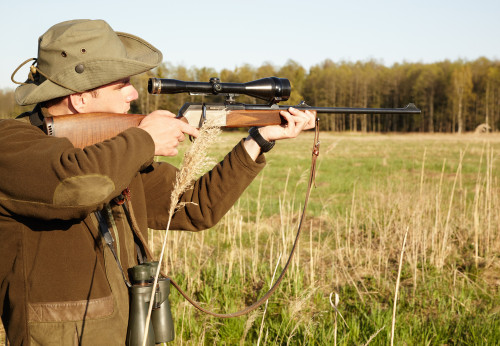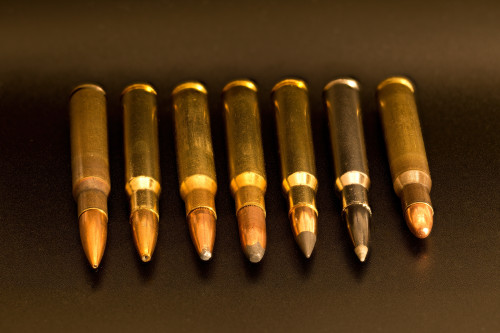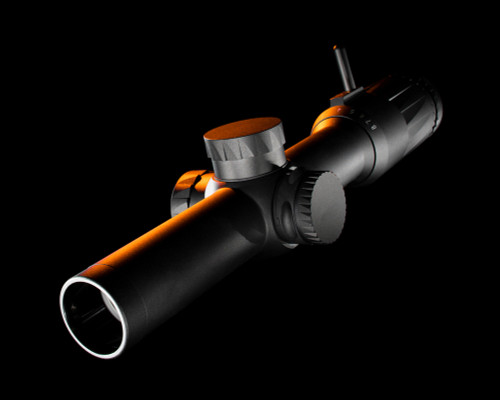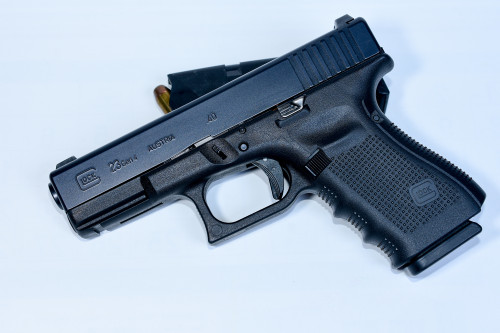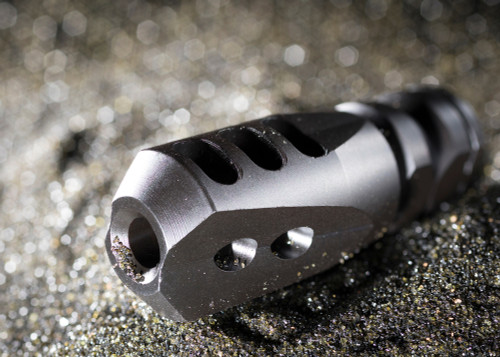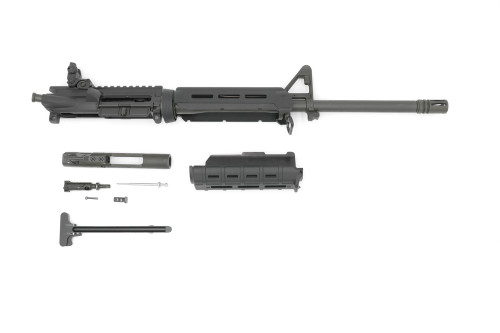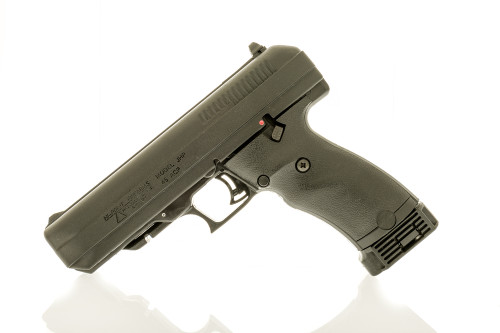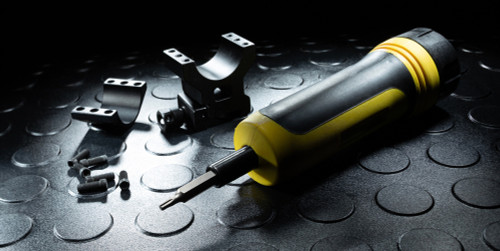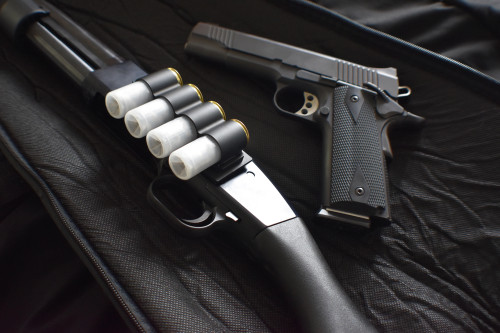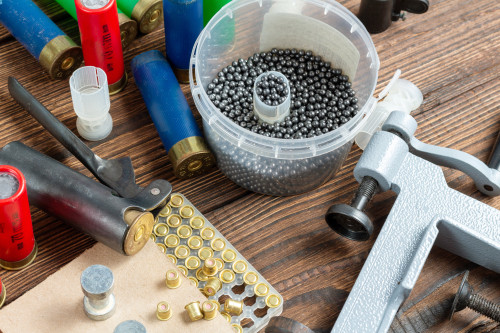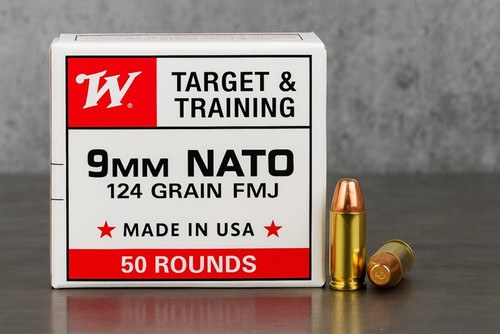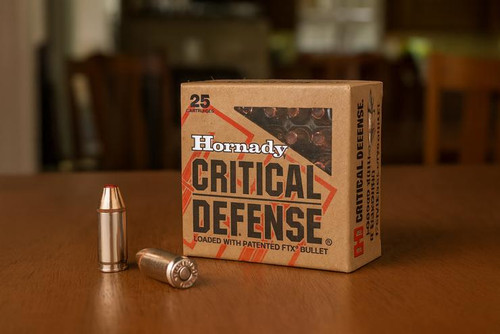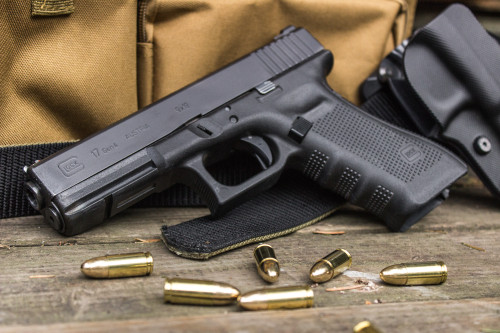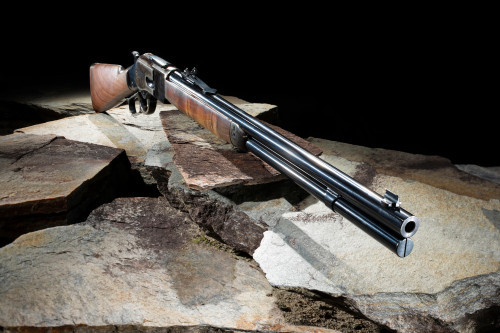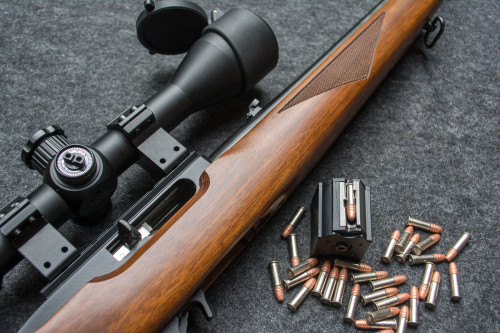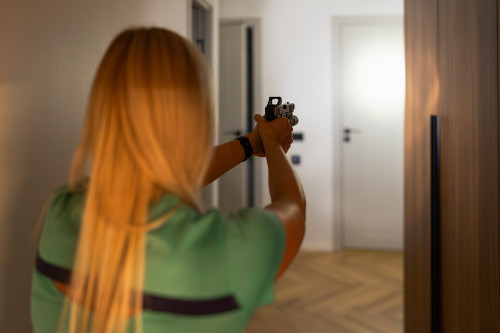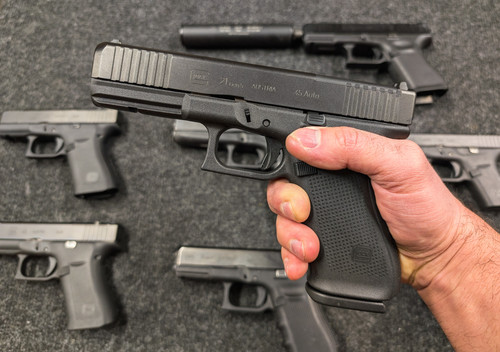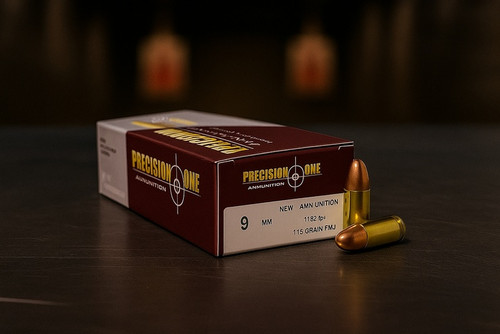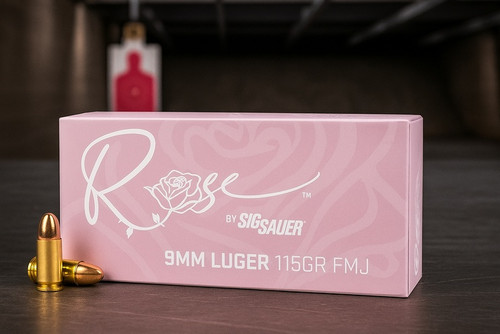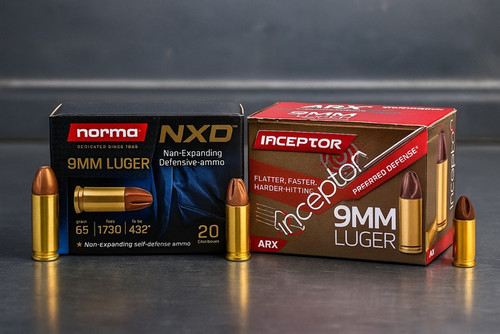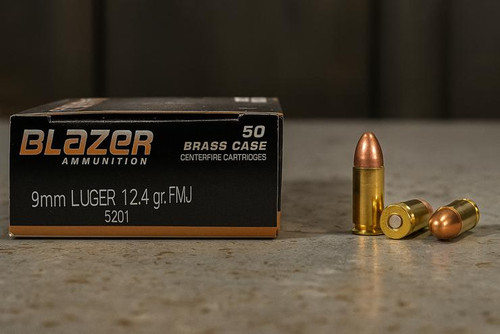Unless you’re a competition shooter, you probably don’t focus too much on the details of ammunition specifications like bullet grain. In fact, most of the “wisdom” coming out of firearms forums and retailers suggests just going with whichever load is recommended by the manufacturer.
For an AR-15 or a 9mm pistol, various gun gurus will recommend using whatever round your local or state police forces choose. For example, the New York Police Department issues Speer Gold Dot 9mm 124 grain +P hollow point ammunition to their officers these days. Meanwhile, the Miami Police Department wants a little more “punch” — so they issue Winchester Ranger 9mm 127 grain +P+ ammunition.
However, in the case of both those fantastic loads, availability and price may be problematic. With supply chain dynamics issues, you can’t always count on them being in stock anywhere — at least not for an affordable price. Plus, are all those opinions about proper grain weight on gun forums worth anything at all?
When you’re at the range, the gun shop, or browsing ammo on Pro Armory, you may encounter a whole spectrum of bullet weights and calibers. Your first instinct may be to choose based on price or brand reputation. But while those factors are important, always keep in mind the weight of the projectile.
Knowing how bullet weight determines the ballistics and terminal performance of a given round can help you make the best ammo choice for your shooting goals. This will make you a smarter shooter and buyer.
Let’s look closer at the meaning of bullet grain and understand how it can affect the performance of different rounds.
Bullet Grain Meaning: Understanding Bullet Grain
Bullet grain (often abbreviated as “gr”) refers to the weight of the cartridge’s projectile — the part at the end that flies out of the casing once the primer is struck. You might get confused here, as “grain” sounds like it refers to the gunpowder or charge in a given cartridge. But it’s really about the ultra-specific weight of the bullet itself.
The grain as a measure of weight goes back over 800 years. Like many ancient units, it’s based on an item that’s quantifiable in the real world. Back then, 1 grain represented the weight of an ideal grain of a cereal, such as wheat or barley.
Today, one bullet grain is equal to one 7,000th of a pound. In other words, one pound equals 7,000 grains. When you buy a new box (or case) of ammo, you’ll see the projectile weight on the package. For example, a good groundhog-zapping AR-15 load from Hornady is the Superperformance .223 Remington 53gr V-Max Varmint round. 53gr, or 53 grains, denotes the weight of the projectile.

Hornady Superformance 223 Rem. 53gr V-Max 20/200
$24.15
at HORNADY
Prices accurate at time of writing
However, other countries may do things a little differently. The European Union requires that the weights of all consumer goods be expressed in metric, so on imported ammunition, the box will be marked with the metric weight for each projectile. In the case of 9mm 124gr FMJ from MEN out of Germany, it’ll say “8,0g (124gr)” since shooters around the world think in grains, regardless of the laws of the land.
Wherever your ammunition comes from, a grain is a grain is a grain — and the weight of the projectile has the most bearing on ballistics and terminal performance.
Bullet Weight and Its Effect on Performance
Ballistics is really just the fun and dynamic application of physics and chemistry to ammunition. You press the trigger, the striker or firing pin hits the primer on the cartridge, interesting chemicals do their pyrotechnic dance, and the resulting explosion pushes a chunk of metal alloy down the barrel of the gun and out into the world.
Once there, it is subject to even more physics — including gravity, wind, and even the curvature of the earth (if you are working with long-distance shots).
In general, a lighter bullet goes further with more accuracy due to a straighter trajectory, but delivers less kinetic energy at a given distance. A heavier bullet will have a shorter range, but delivers more kinetic energy at a given distance, usually.
At the same time, some of this can change based on the caliber and platform you’re shooting with. But for the purposes of this article, we’ll keep it simple.
More Weight = More Bang
The heavier the bullet, the more force is required to get it out of the firearm’s barrel and up to an effective velocity. To accommodate the required force, manufacturers typically load the cartridge with more gunpowder. So, with a heavier bullet, you’ll feel more of a recoil impulse, which can affect accuracy.
Also, a heavier bullet will retain more energy over a given range, resulting in better terminal performance (how a bullet acts when it strikes an object). In real-world terms, it is the effect of a bullet on organic tissue upon impact. In a defensive situation or when hunting you want to dump as much energy as possible into your target. The more “shock” delivered, the quicker the target is neutralized.
More Weight = More Drop
Your heavier bullet may pack more of a punch at a given range, but over distance and time, the drop of the bullet is more severe (because gravity) and it loses energy quicker at the outer fringes of its effective range. This drop is also harder to account for, especially for novice shooters. They may switch to a lighter projectile for increased accuracy at range due to its flatter trajectory, but with the tradeoff of less terminal performance upon impact.
Regardless of projectile technology, note that a lighter projectile can be affected more severely by environmental factors such as wind, temperature, and humidity. A sticky and breezy day in Miami presents different environmental challenges than a cold and still morning in Fargo.
How Ammo Brands Account for Bullet Grain
Different grain weights in a given caliber have different performance and recoil characteristics, and some weights lend themselves to specific use cases.
Knowing many shooters prefer lighter projectiles, companies like Hornady developed novel and innovative lightweight projectiles such as the FTX. This design consists of a traditional hollow point “plugged” with a polymer tip to aid in penetration and rapid expansion upon impact, increasing the practical performance of the round, despite lighter weights. A shooter can feel confident carrying a 9mm 115gr FTX load from Hornady, or a similar projectile from a competing manufacturer.
Other Factors Influencing Bullet Performance
While on the range, a 9mm 115gr full metal jacket load may suffice for poking holes in paper and zeroing in that new red dot optic, but that FMJ load is eminently unsuitable for defensive use. You’ll definitely want the hollow point companion to that 9mm round in the same weight or greater.
But bullet grain isn’t the only factor affecting ballistics and terminal performance. Several other factors can influence the effectiveness of your favorite round.
Barrel Length
Even in handguns, a half-inch can change the performance of a bullet enormously. The longer the barrel, the longer the exploding propellant burns inside the barrel and directs its energy to greater productivity (i.e. pushing the bullet as fast as it possibly can). The idea is for all the powder to burn inside the barrel, but not have the barrel so long that friction becomes a problem.
If the barrel is too short on a firearm, the effect is a rather stunning fireball. This is the unburnt powder flying out of the barrel and combusting explosively, rather than directing its energy to more practical things (like pushing the bullet faster).
However, some “GunTubers” specifically build rifles and pistols short in order to get that fireball effect — but it’s mostly for fun and likes. (It looks pretty cool, and if someone else is footing your ammo bill, why not?)
Example: AR-15/M16 Barrel Length
Barrel length is usually a function of performance versus ergonomics. For example, the original AR-15 and M16 spec called for a 20-inch barrel. Eugene Stoner, the platform’s inventor, determined that 20 inches allowed all the powder to burn from a .223 (later 5.56x45mm) caliber cartridge, without introducing too much friction.
However, as our soldiers found out in Vietnam, a 20-inch barrel proved to be cumbersome and unwieldy, even if it made the .223 bullet zip along at 3200 feet per second, or over 2000 MPH.
Later, when the M16 was revised into the M4, the barrel length was cut down to 14.5 inches, an acceptable tradeoff of performance versus ergonomics, especially since soldiers were more likely to engage with threats closer in due to the changing and more urban nature of the battlespace. To compensate, some soldiers in a team were issued AR-type rifles with 18-inch barrels for a little more “punch” at range.
Barrel Harmonics
A longer barrel is subject to barrel harmonics (i.e. the barrel vibrating from the shock of a bullet being shot down it). On a shorter barrel, this isn’t as big of a deal. But with longer barrels, it’s more pronounced — and with lower-quality barrels, it can actually be a real game-changer, making accuracy a bad joke at best.
Propellant Choice
Firearms and ammunition are a marriage of mechanical engineering, physics, ergonomics, and chemistry. Even the type, grain shape, and chemical composition of the gunpowder matters. While the base compound of gunpowder is the hotly-contested nitrocellulose (more on that later), enterprising manufacturers usually add their own “secret sauce” to the propellant mix.
For the most part, it’s all a trade secret. IMR won’t give out the molecular composition of their latest variant of the legendary 7828 powder. But with their reputation, when they say “trust us,” it’s usually the best course of action. Similarly, the Finns over at Vita Vuori aren’t going to say much about their N500 powders.
However, if you buy factory-made ammunition, you don’t have much of a say in the propellant choice. Speer uses CCI powders because CCI and Speer are under the same corporate umbrella, for example. Winchester uses their own in-house blend. Thankfully, since gunpowder production is a serious science, the major players are quite good at it, and you can rest easy knowing your ammunition most likely has the best powder contained in the brass.
Reloading
If you are really adventurous, you can make your own ammunition at home. Reloading and handloading are great for shooting for competitions, as they’re far cheaper than any other ammunition.
You can get bullets in whatever weight you wish, the appropriate casings, the primers, and of course the gunpowder. However, since you’re dealing with explosives, you’ll want to crack open textbooks and take some classes before going this route. You could easily underload a cartridge, which leads to a dangerous condition called a “squib” round, where a bullet lodges in the barrel of a gun. Obviously, the subsequent round fired impacts its stuck brother, causing (at the minimum) a ruined firearm. Most likely, you’ll suffer severe injuries as well. Reloading and handloading are fun, but they’re real God Mode stuff for the dedicated ammo nerd.
Environmental Factors
Shooting a firearm is the ultimate play of physics, engineering, and the environment. Everything from the bullet weight to the temperature and density of the air affects the accuracy and performance of a projectile in flight.
- Air Density - Cooler air is more dense, so a bullet has to work harder to cut through colder air. If it’s warmer out, the air is thinner and the bullet can sail along a little more effortlessly.
- Wind - Over long ranges, wind can blow bullets off course. A competent long-range shooter will select his bullet grain weight and shape accordingly to minimize the disruptive influence of the wind.
- Humidity - Humidity creates thinner air, which allows bullets to travel easier, resulting in less drag, greater distance, and more powerful impact.
- Gravity - If you want to really stretch out in long range shooting, you’ll not only have to account for bullet grain weight, wind, temperature, barrel length, and caliber. You’ll have to think about gravity, the Coriolis Effect, and even the curvature of the Earth.
The true record-setters take it to extremes. They measure all these factors, and even the temperature of the barrel itself, to calculate that extreme range shot. As it stands right now, the record is a staggering 4.4 mile hit, done in the high deserts of Wyoming back in 2022. The 416-grain bullet was hand-lathed down to sub-millimeter tolerances and shot out of a one-of-a-kind rifle, with a flight time of over 25 seconds before impacting the target.
Dedication is putting it mildly.
Firearm Design And Condition
Not all of us are in the business of shooting 4.4 miles, with the budget to build a rifle to be used for one session and then preserved for the ages. We have to think about more mundane things like the design and condition of our firearms (in addition to the bullet grain weight).
Barrel Twist Rate
It’s not as big of a factor in pistols, but in rifles, the twist rate is very important. This is the length of barrel rifling grooves that it takes to rotate a bullet once. For example, if an AR-15 barrel is rated with a 1/7 twist rate, it means that it rotates a bullet once in the length of 7 inches. Ideally in any rifle platform, you want the fastest twist rate possible, so you can properly spin and stabilize the whole range of bullet grain weights in that caliber.
When browsing your gun shop’s selection of AR-15s, for example, you may notice that some rifles are marked with a 1/9 barrel twist rate. While this is fine for 55 grain M193 5.56mm loads, it can’t properly spin and stabilize the more common heavier bullet grain weights in the caliber. So you’ll want a barrel twist rate of at least 1/7 in your AR-15, allowing you to spin heavier bullets up to around 85 grains, for the best accuracy.
Barrel Condition
Believe it or not, barrels are a “wear item” on a gun. You may have a barrel with an ideal twist rate, but over time those lands and grooves of the barrel’s rifling wear down from friction and heat. As the barrel wears down and smooths out, the bullets leaving it are not spin stabilized properly, and come tumbling out of the barrel, ruining accuracy.
But modern barrels have a service life in the tens of thousands of rounds, and for most shooters, the barrel on their guns will never need replacement. Though if you can afford to shoot 30,000 rounds through your AR-15 barrel, you can probably afford a $300 barrel replacement.
Barrel Attachments
Along those lines, barrel attachments like compensators and suppressors can affect bullet performance, regardless of grain. Your compensator will direct some of the explosive recoil force to the sides of the muzzle, giving you a little more stability. Whereas a suppressor (aka a silencer) will provide a little more barrel length, as well as acting like a big weight on the front of your gun, soaking up some of the recoil.
Bullet Design
As we’ve learned, lighter bullets travel farther but usually have inferior terminal performance. But, that’s not always true.
Science and technology march on, even in ammunition. Companies like Hornady have their lightweight and potent FTX projectiles, which consist of a hollow point round with a central polymer “plug” to enhance penetration through barriers, allowing for the bullet to expand deeper in the target for a more devastating “shock”. Companies like G9 Ammunition have developed an auger-like “External Hollow Point” projectile which imparts a devastating “cavitation” effect on soft tissue, causing rapid terminal effects, even with a lightweight 90 grain 9mm bullet.
Modern projectile design incorporates fluid dynamics and high-tech manufacturing processes. This will continue as the industry maximizes the performance of smaller caliber ammunition.
Why Shooting Skill Matters With Ammo Selection
Let’s say you’ve done your research, picked the perfect bullet grain weight, barrel length, and firearm. You’re ready to go. But you still miss the target.
Any weapon system is only as good as the person behind it. If you aren’t trained, a quality firearm will just be a tool that misses the target, but very precisely. The bullets go exactly where the gun is pointed (which may not be exactly where you think it is). That’s why it pays dividends to work on the fundamentals like grip, stance, trigger press, shot placement, recoil management — even breath control.
Let’s touch on two of these with regard to bullet grain.
Shot Placement
All the ballistic science in the world won’t matter much if you miss. Shot placement is critically important, and you should only choose a bullet grain weight that you are comfortable shooting accurately and precisely.
For example, a 147 grain 9mm hollow point projectile may deliver impressive terminal performance, but if you miss, it’s pointless. On the other hand, if you score a hit with a lighter projectile (say a 115 grain 9mm hollow point round), you’re still in the fight and can deliver successive follow-up shots to decisively win the engagement.
Those three 115 grain projectiles hitting center mass on a threat, shutting down its nervous system, are more effective than the one 147 grain round that missed completely and got embedded in a tree.
Recoil Management
Ammunition design is always progressing, and the wisdom of “heavier bullet grain weight for more effective defense” isn’t entirely true anymore. New and radical bullet designs from G9 and Liberty Defense are taking the ammunition world by storm, with these hot-rod rounds showing impressive results in the lab. However, there’s no documented data from the street or combat, so tread accordingly.
If you’re just looking for pure street reputation, then you can pick up the ammunition your local police force uses. Since they have to accommodate officers of all sizes, chances are the ammunition selection enjoys a broad-based appeal throughout the department.
Try Dry Firing
You can even practice most of the fundamentals (except recoil control — with some exceptions) at home with dry fire drills — provided you take proper safety precautions and ensure your firearm is unloaded. For these dry fire sessions, do yourself an extra favor and keep your loaded magazines and ammunition out of the room where you’ll practice. Of course, always observe the Four Rules of Gun Safety.
You can work on grip, stance, and trigger technique without consuming valuable ammo, or getting distracted by the bang and recoil of real shooting. You’ll develop muscle memory and fundamentals, without spending a dime.
Thanks to advanced technology, dry firing can be a lot more exciting and rewarding. Dry fire training systems like MantisX enhance the experience by adding a digital interface to tally points, creating physical targets, and more.
Looking for a way to improve your firearms training routine? Pro Armory offers training to help you become more proficient and safe with your firearm. Sign up for our newsletter to be notified when training officially launches.
Don’t Forget Range Training
You should still make the time to run your guns for real at the range. A good piece of practical advice if you are training with your carry gun is to match your training ammo bullet grain weight to your carry ammo bullet grain weight.
For example, if your carry ammunition is the vaunted Speer Gold Dot Hollow Point 9mm 124gr +P, you should train with Speer Lawman 124gr +P Full Metal Jacket training ammunition, or something similar. This consistency ensures predictable performance in the real world.
A Note on Bullet Grain and the Supply Chain
With conflicts in various corners of the world heating up in 2024, much of the raw inventory of American defense manufacturers is being eaten up by domestic and foreign military customers. This severely limits supply and drives up demand along with the price.
Whether it’s a big artillery shell or a small arms cartridge like a 5.56mm round for an AR-15, all use nitrocellulose as a propellant — but there’s also a shortage of this compound (which comes from China). So if you purchase the incorrect type of ammunition today just to save a few pennies, you may find that tomorrow (when you realize your mistake), the correct type and grain of ammunition is either really expensive or unavailable. It’s wise to select your ammunition’s grain weight carefully, and lay in as much as you can afford.
For instance, Speer’s 9mm 124gr +P load is usually easy to find via various online outlets. However, panic buying occasionally has this in short supply when combined with government agencies ordering it by lots of 100,000 or more.
In the case of the Winchester 127 grain load, it’s usually only sold to law enforcement agencies, and any found for commercial sale is usually a contract overrun with a higher price. Astute ammunition sellers know the Winchester load is a prized performer and may even charge double of what an agency pays, since they know hardcore ammunition “nerds” will gladly cough up the money for a box of 50, especially with that “Law Enforcement Ammunition” branding on the box.
The Bottom Line
At the end of the day, focus on bullet grain weight for the bulk of your ammunition needs. Select whichever weight you can manage in a given caliber for a given task, whether you’re out in the field target shooting, hunting, or in the rare event that you need to employ your firearm in a defensive manner.
The best bullet grain weight is the one with which you can score those hits. So do your research in the caliber you’re working with and pick the best round for your shooting goals.
At Pro Armory, we’re a veteran-operated business. We know the importance of having the right ammunition for the right occasion. That’s why our mission is to offer great ammunition at a price you can afford.
Browse our selection of rifle and handgun ammunition in various brands and grains to find the perfect round for your needs. We also offer a selection of shooting accessories including optics, grips, and more.




